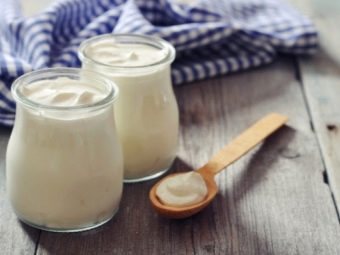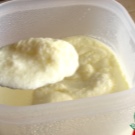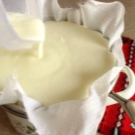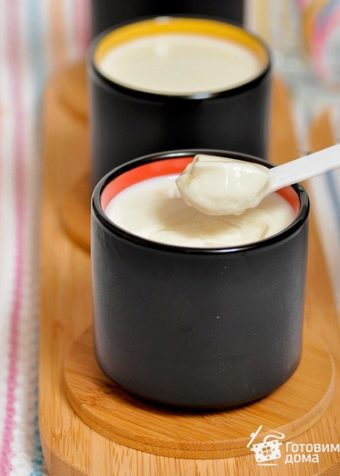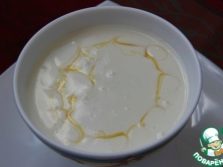How to make yogurt without yogurt maker?

The first mention of such a wonderful and useful product, like yogurt, appeared more than six thousand years ago. According to some legends, this dairy product was invented by the ancient people - the Turks. Another legend claims that fermented dairy products were served on the table of the emperors of the great civilizations of ancient Greece and Rome. In European countries, yogurt was first talked about at the beginning of the sixteenth century, after the French king Francis I had managed to overcome stomach disease by consuming this fermented milk product.
The mass production of yogurt came in the twentieth century, soon after the notorious Danone made an announcement about this product. Despite the fact that this fermented milk product is a rather old invention, it is annually subjected to various production modifications, and even now self-preparation and consumption of subsequent yogurt is considered a more sensible idea.
Advantages and disadvantages
The counter of any dairy department is replete with a wide assortment of a wide variety of yogurts. The product can be either natural or with the addition of any flavor filler, with or without fruit pieces, flavored, fatty, and dietary. The manufacturer claims that regular use of this fermented milk product contributes to the normalization of the gastrointestinal tract, accelerate metabolism and improve well-being. Nevertheless, home-cooked products are still considered much more beneficial.
Its positive effect on the human body is priceless. The advantages of yogurt are:
- normalization of the gastrointestinal tract, as well as intestinal microflora, occur as a result of activation of the Bulgarian rod and thermophilic streptococcus;
- the product helps to gently fight against constipation and intestinal disorders;
- yogurt is quite effective in combating almost any allergic reactions on the skin, helps to update the upper layer of the epidermis;
- regular use of this fermented product helps to strengthen the body's immune system, due to which it can be noted that its resistance to infectious diseases and microorganisms is increased;
- when preparing homemade yoghurt, the addition of granulated sugar is a purely individual desire, which means that the product can be consumed by a person suffering from a disease such as diabetes mellitus or actively trying to lose weight;
- contributes to the proper loss of extra pounds.
The use of homemade yogurt is contraindicated only in one case - the presence of an allergic reaction to any of the ingredients involved in the preparation, or his individual intolerance. Harm from this product can be applied to the body, provided that poor quality ingredients or non-sterile containers are used in the cooking process. The latter contribute to the reproduction of harmful microflora and dangerous pathogens.
Cooking methods
Variations on homemade yogurt set. Below we look at the most widely used options that even a person who is far from cooking can cope with. All presented recipe fermented milk product does not need specialized equipment, such as, for example, yogurt maker.
Below are the five main recipes for this fermented milk product. For each of them, it is necessary to use any available means, for example: a thermos, blankets, dry sourdough, multivarki, oven and sour cream sourdough.
In a thermos
This recipe is quite simple and should not cause any difficulties.You need a high-quality thermos: it has high thermal insulation characteristics that will be needed to maintain the desired temperature for several hours, which is the main condition for obtaining a quality product.
The recipe for homemade yogurt in a thermos needs to be done quickly and step by step.
- To begin, bring to the boil goat or pre-pasteurized cow milk. After that, cool the liquid to thirty-eight - forty degrees.
- At this time, it is necessary to process all kitchen utensils and containers that will be used to prepare a fermented milk product.
- Cooled milk is usually covered with a film - remove it. Then pour some milk (no more than one hundred milliliters) and mix it thoroughly with natural yogurt purchased in advance. Do not forget that yogurt in this case is used as a starter, and therefore in its composition should not be dyes, flavors and other "chemistry". The composition should contain only milk and sourdough.
- Then the ferment is poured into the remaining milk, after which the resulting mass is poured into a thermos and sealed with a lid.
- After eight hours, the resulting homemade natural yogurt is poured into sterile containers for further storage in the refrigerator. Before use, the product is recommended to cool slightly for a couple of hours.
Greek product
Greek yogurt is widely popular due to its specific texture. Its texture may seem like a cream cheese with a light and delicate flavor. It can be used as a standalone product, or as a basis for a cake or cake. Technology of preparation is similar to the above recipe using a thermos. However, a conventional glass jar and a warm blanket are used as a means to maintain the temperature.
Similarly, the required temperature conditions will be maintained, which will lead to souring of the product. After six to eight hours, the resulting homemade yogurt is poured into a colander, which is pre-covered with a gauze napkin.
After some time, the waste liquid will drain through the gauze and dense creamy Greek yogurt will remain.
On sourdough
This recipe involves the use of one liter of milk and ready ferment. A natural yeast substitute is purchased at any pharmacy. Sometimes you can meet her on the counter of a large supermarket. The algorithm for making yogurt remains unchanged. The only exceptions are changing ingredients. Dry sourdough is taken as a substitute for natural store yogurt.
When cooking, boiled or UHT milk is used. This product undergoes thorough industrial processing, which indicates the destruction of all dangerous pathogenic bacteria. So, in a small amount of milk add a portion of dry yeast, after which the resulting mass is mixed with milk residues, poured into a container for further oxidation and wrapped in a terry towel (or left in a thermos).
In the slow cooker
To begin with, mix milk with any kind of leaven. Then pour the contents into pre-sterilized glass jars. Choose dishes of this size so that it can fit in the bowl of the slow cooker. Then a cloth napkin is placed on the bottom of the bowl and water is poured. Next put the banks with future yogurt. Activated mode setting "Yogurt". If it is not available, select “Preheat” for the next fifteen minutes. Repeat this procedure three times every sixty minutes. After three hours, homemade yogurt will be ready to eat.
In the oven
The recipe with the use of the oven is similar to the technology of cooking using the multicooker.However, for those who are not the happy owner of the multicooker, can repeat a similar algorithm using the oven. Only as a lid for glass jars is used foil or food film.
On sour cream
The basis is sour cream, which must be infused for twelve hours. Three tablespoons of fat sour cream are added to the boiled milk, which is preheated to thirty-eight degrees. Then all the ingredients are slowly mixed using a conventional fork or blender. The resulting mass is deposited in a warm place to insist. After twelve hours, the product is ready for use.
Five more simple homemade yogurt recipes without a yogurt maker are waiting for you in the video below.

